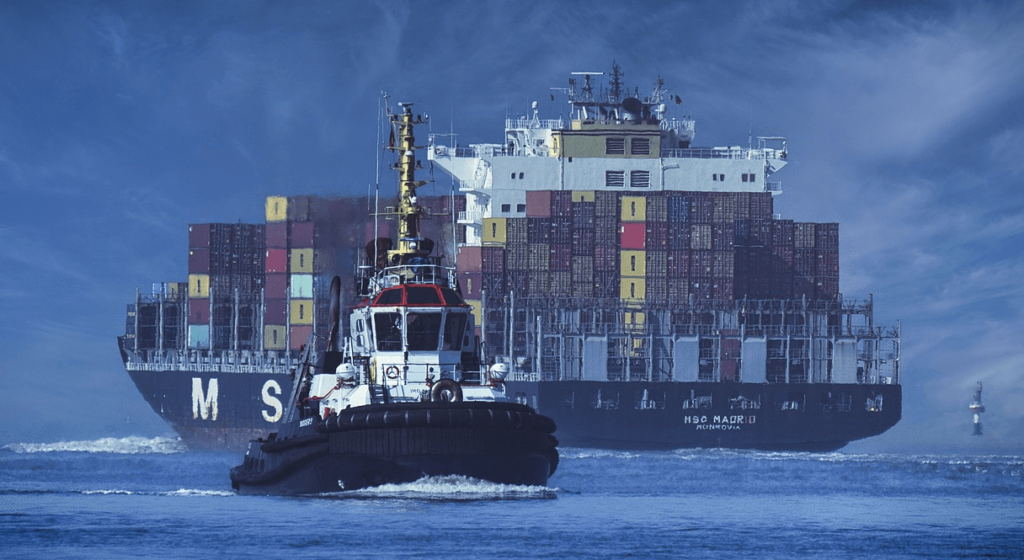📑Table of Contents:
Last updated on September 18th, 2023 at 07:32 am
Shipping containers serve a crucial role in global trade and transportation, providing a standardized and efficient means of moving goods across the world. Here’s a brief overview of their purpose and common uses. Shipping containers are designed to safely and securely transport a wide variety of goods over long distances, whether by sea, rail, or road. They offer a standardized and stackable structure that simplifies handling, storage, and transportation logistics.

Types of Shipping Container Dimensions
Shipping containers come in various sizes and types, each designed for specific purposes. The most common shipping container dimensions include:
1. Standard Dry Containers:
– 20-foot Standard Container: Approximately 20 feet long, 8 feet wide, and 8.5 feet tall (20′ x 8′ x 8.5′).
– 40-foot Standard Container: Approximately 40 feet long, 8 feet wide, and 8.5 feet tall (40′ x 8′ x 8.5′).
2. High Cube Containers:
– 20-foot High Cube Container: Approximately 20 feet long, 8 feet wide, and 9.5 feet tall (20′ x 8′ x 9.5′).
– 40-foot High Cube Container: Approximately 40 feet long, 8 feet wide, and 9.5 feet tall (40′ x 8′ x 9.5′).
3. Open Top Containers:
– These containers have a removable top, often covered with a tarpaulin, to allow for loading and unloading of oversized cargo.
4. Flat Rack Containers:
– Flat Rack containers have collapsible sides, making them suitable for irregularly shaped or oversized cargo.
5. Refrigerated Containers (Reefer):
– These containers are designed to transport temperature-sensitive goods, with varying dimensions similar to standard containers.
6. Open Side Containers:
– Open Side containers have doors that open on one entire side, providing easy access for loading and unloading.
7. Tunnel Containers:
– These containers have doors at both ends, allowing for easy access from either side.
8. Tank Containers:
– Tank containers are specially designed to transport liquids and gases. They come in various sizes and shapes, depending on the cargo.
9. Insulated Containers:
– Insulated containers are equipped with insulation to maintain temperature control, similar to reefers but without refrigeration units.
10. Half-Height Containers:
– These containers are half the height of standard containers and are designed for transporting heavy cargo like minerals.
11. Double-Door Containers:
– Double-door containers have doors on both ends, allowing for convenient loading and unloading.
12. Specialized Containers:
– Specialized containers are designed for specific purposes, such as car carriers, flatbeds, and bulk containers.
It’s important to note that container dimensions may vary slightly depending on the manufacturer and region. Standard dry containers are the most commonly used for general cargo transport, but choosing the right type and size of container depends on the specific needs of the cargo being shipped.
Container Identifications System

- The Container Number is of the major marking on the container’s doors. It is an alpha-numeric number in sequence made up of 4 letters and 7 digits. The container’s number unique identification system has been created by the International Standards Organization (ISO) under the unique code IS06346:1995(E).
As per the unique ISO code, container identification systems consist of the following important items:
Owner code – is the 3 letters (in this example ECM on the photo above)
Equipment category – 1 single letter (in the example in photo above, letter: U is showing a freight container. Other categories being J for detachable container related equipment (such as Genset) and Z for trailers and chassis).
Serial number – it is consisting of 6 digits (only numbers, no letters)
Check Digit – this is unique 1 number (again, numbers only, no letters)
The container’s owner code is a unique to who owns the container in question, as per our example. It is the registration of this unique code determined by Bureau International des Containers et du Transport Intermodal (BIC), an international organization.This system is created to avoid any duplication of the unique code issued by container operator or shipping line.
Looking to find the owner of a container? It’s easy and it shows it on the container. You can do a BIC Code search in the database to identify the correct owner. Although, the owner of the container does not need necessarily be the operator of the container as they could have leased it to another operator, client or shipping line.
- Check Digit – it is usually a part of the full container number, the check digit is used to identify if the above mentioned identification sequence is valid or invalid. It is super important number as it can be another cross-check. An example, if you go to BIC’s Check Digit Calculator and enter the prefix: ECMU and the numbers 465749, it should come up as “6”. This is an example to see what you get as the Check Digit.

- Lessor or Container Owner – It shows the company (entity) operating this container and also who owns it (company / entity). It can be a shipping line, example (CMA CGM Group) or a container leasing company such as TRITON International, company leasing containers, to shipping lines that need to increase their inventory volume, but in the same time, not increasing their own assets.
- Weights and Dimensions – for example, 30,480 KG (as shown in the image above) is the maximum weight that the container can carry. This weight includes its own tare weight of 3,720 KG or 8,200 LB as total. That’s the weight that the SOLAS VGM must show on the certificate. In addition, CU. CAP. is abbreviation for cubic capacity and the volume of a container in total cubic meters.
- ISO Code – as per the International Standards Organization (ISO) under the code IS06346:1995 (E), each container is given a unique ISO Code. This is a must do practice in order to avoid any confusion in naming the container. The name of the container must be clearly shown. In an example: a standard 20′ container are the following names: Dry Van (DV), General Purpose (GP), Standard (SD), Normal, Dry Container (DC) in different countries.
All of these terms are different and those container terms cannot be used in uniform system. The systems that are in general use for proper transmission of container data across ports, shipping lines, customs, operators, etc. As a result, as industry standard, the ISO code of 42G1 (in our good example above) is generally used to show that the container in our photo (example shown) is a 40 foot container with a total tare weight of a total of 3720 kilograms.
10 Top Leasing Containers Companies
- Textainer Group Holdings Limited: One of the largest container leasing companies globally.
- Triton International Limited: Known for its extensive container fleet.
- SeaCube Container Leasing Ltd.: A leading lessor of refrigerated containers (reefers).
- CAI International: Offers container leasing and logistics solutions.
- Florens Container Services: Provides a range of container leasing options.
- Beacon Intermodal: Offers container leasing and management services.
- Magellan Maritime Services: Known for its container leasing solutions.
- Raffles Lease: Specializes in leasing shipping containers and related equipment.
- Blue Sky Intermodal: Provides container leasing and management services.
- Cronos Containers: Offers a wide range of container solutions, including leasing.
In Conclusion
Shipping container dimensions and identification play a pivotal role in the world of global trade and transportation. Standardized container sizes ensure efficient loading and unloading of goods, while unique identification codes enable precise tracking and management of shipments. These practices simplify logistics, enhance security, and contribute significantly to the seamless flow of goods across the globe, making shipping containers an indispensable part of modern commerce. Our daily lives depends on transportation and shipping containers. Respect all people that work in the transportation and shipping industries.





